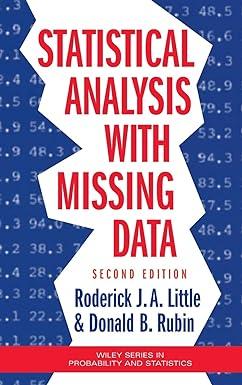3.9. The following table shows respondent means of an incomplete variable Y (say, income in $1000), and
Question:
3.9. The following table shows respondent means of an incomplete variable Y (say, income in $1000), and response rates (respondent sample size=sample size), classified by three fully observed covariates: Age (<30, >30), marital status (single, married), and gender (male, female). Note that weighting classes cannot be based on age, marital status, and gender, since there is one class with four units sampled, none of which respond. Calculate the following estimates of the mean of Y, both for the whole population and for the subpopulation of males:
(a) The unadjusted mean based on complete cases.
(b) The weighted mean from response propensity stratification, with three strata defined by combining classes in the table with response rates less than 0.4, between 0.4 and 0.8, and greater than 0.8.
(c) The mean from mean imputation within adjustment classes defined as for (b). Explain why adjusted estimates are higher than the unadjusted estimates. Respondent Means and Response Rates, Classified by Age, Marital Status, and Gender Male Female Age Single Married Single Married <30 20.0 21.0 16.0 16.0 24=25 5=16 11=12 2=4 >30 30.0 36.0 18.0 ? 15=20 2=10 8=12 0=4
Step by Step Answer:

Statistical Analysis With Missing Data
ISBN: 9780471183860
2nd Edition
Authors: Roderick J. A. Little, Donald B. Rubin






